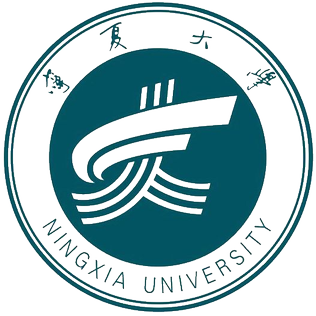
The Renmin University of China is a public university in Haidian, Beijing, China. The university is affiliated with the Ministry of Education, and co-funded by the Ministry of Education and the Beijing Municipal People's Government. The university is part of Project 211, Project 985, and the Double First-Class Construction.

Tianjin University, previously Peiyang University (北洋大學), is a national public research university in Tianjin, China. Established in 1895 by a royal charter from Guangxu Emperor, Tianjin University is the oldest university in China, leading the country's significant shift towards modernization and development. The university is affiliated with and funded by the Ministry of Education of China. It is part of Project 211, Project 985, and the Double First-Class Construction.

The Dalian University of Technology is a public university in Dalian, Liaoning, China. The university is affiliated with the Ministry of Education of China and co-funded by the Ministry of Education and SASTIND. Founded in 1949, the university is part of Project 211, Project 985, and the Double First-Class Construction.

The Shanghai University of International Business and Economics is a municipal public university in Songjiang, Shanghai, China. It is affiliated with the City of Shanghai and funded by the Shanghai Municipal People's Government.

Wuhan University is a public university in Wuhan, Hubei, China. It is affiliated with and funded by the Ministry of Education of China. The university is part of Project 985, Project 211, and the Double First-Class Construction.

The Huazhong University of Science and Technology is a public university located in Wuhan, Hubei, China. It is affiliated with the Ministry of Education of China. The university is part of Project 211, Project 985, and the Double First-Class Construction.

Project 211 was a higher education development and sponsorship scheme of the Chinese central government for preparing approximately 100 universities for the 21st century, initiated in November 1995. There were 115 universities and colleges selected to be part of this program.
National Key Universities previously referred to universities recognized as prestigious and which received a high level of support from the central government of the People's Republic of China. The term is no longer in official use by 1990s. The term "zhòngdiǎn" 重点, translated here as "key," in this phrase can also be translated as "major," "priority," or "focal." The term "National Key Universities" then became defunct, and these schools are now normally referred to as "Double First Class Universities“, based on the China state Double First Class University Plan. However, it remains part of the vernacular, as evidenced by some Chinese media articles which still refer to "National Key Universities".

Project 985 was a higher education development and sponsorship scheme of the Chinese central government for creating world-class higher education institutions, initiated in May 1998. There were 39 universities selected to be part of this program.
Higher education in China is the largest in the world. By the end of 2021, there were over 3,000 colleges and universities, with over 44.3 million students enrolled in mainland China and 240 million Chinese citizens having received high education. The system includes Bachelors, Masters and Doctoral degrees, as well as non-degree programs, and is also open to foreign students.

Ningxia University is a regional public university in Yinchuan, Ningxia, China. It is affiliated with the Ningxia Hui Autonomous Region and co-funded by the regional government and the Ministry of Education. The university is part of Project 211 and the Double First-Class Construction.

Jiangnan University (江南大学) is a public university located in Wuxi, Jiangsu, China. It is affiliated with the Ministry of Education, and co-sponsored with the Jiangsu Provincial Government. The university is part of Project 211 and the Double First-Class Construction.
The Chinese university ranking is a ranking of universities in Mainland China compiled by Wu Shulian. He has been studying "Chinese University Ranking" since 1991 and leader of "Chinese University Ranking Research Group".

The Southern University of Science and Technology is a municipal public university in Shenzhen, Guangdong, China. It is owned by the City of Shenzhen and funded by the municipal government. The university is part of the Double First-Class Construction.
Huai Jinpeng is a Chinese computer scientist and politician. He is the current Minister of Education, party secretary of the China Association for Science and Technology (CAST) and an academician of the Chinese Academy of Sciences.

The World First-Class UniversityandFirst-Class Academic Discipline Construction (世界一流大学和一流学科建设), together known as Double First-Class Construction (双一流建设), is a higher education development and sponsorship scheme of the Chinese central government, initiated in October 2015. There are 147 universities and colleges selected to be part of the program.
As of 2020, China had the world's second-highest number of top universities in several most cited international rankings including the Academic Ranking of World Universities (ARWU), the U.S. News & World Report Best Global University Ranking, the Center for World University Rankings (CWUR), the Performance Ranking of Scientific Papers for World Universities and the Three University Missions Ranking.
In China, universities and colleges are classified in different ways for administrative purposes by the Ministry of Education of China.











